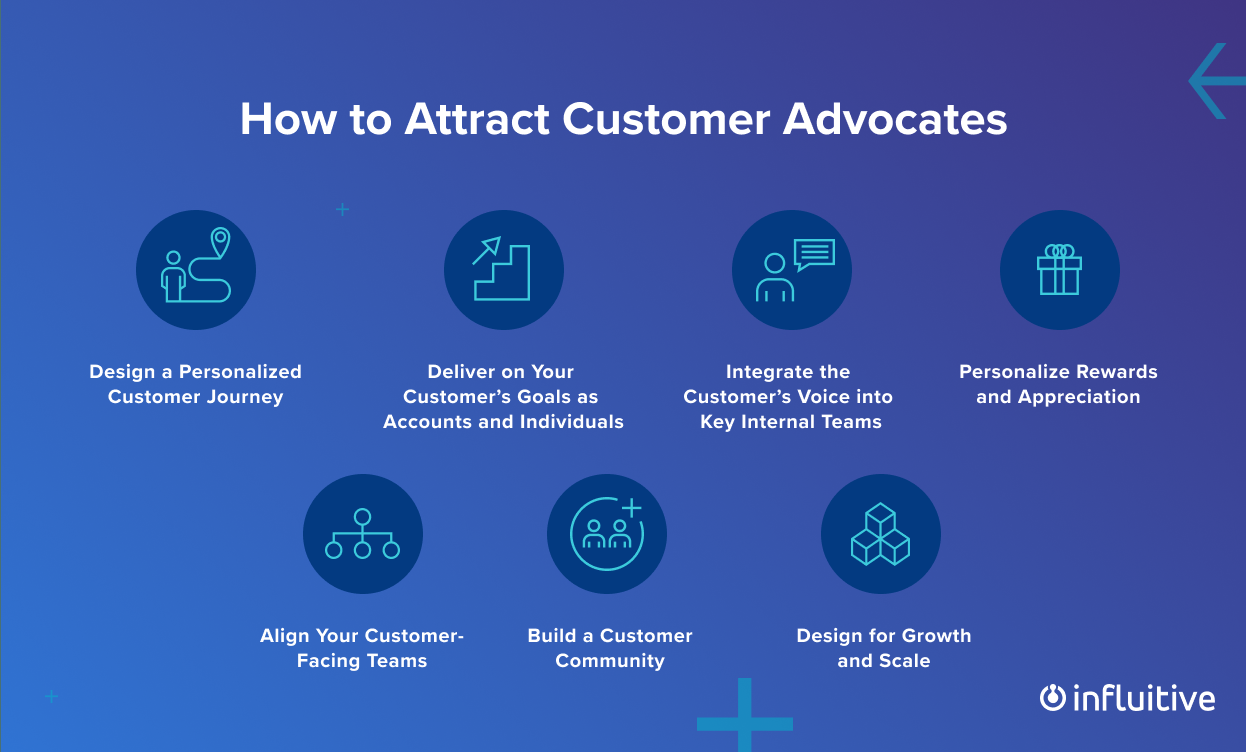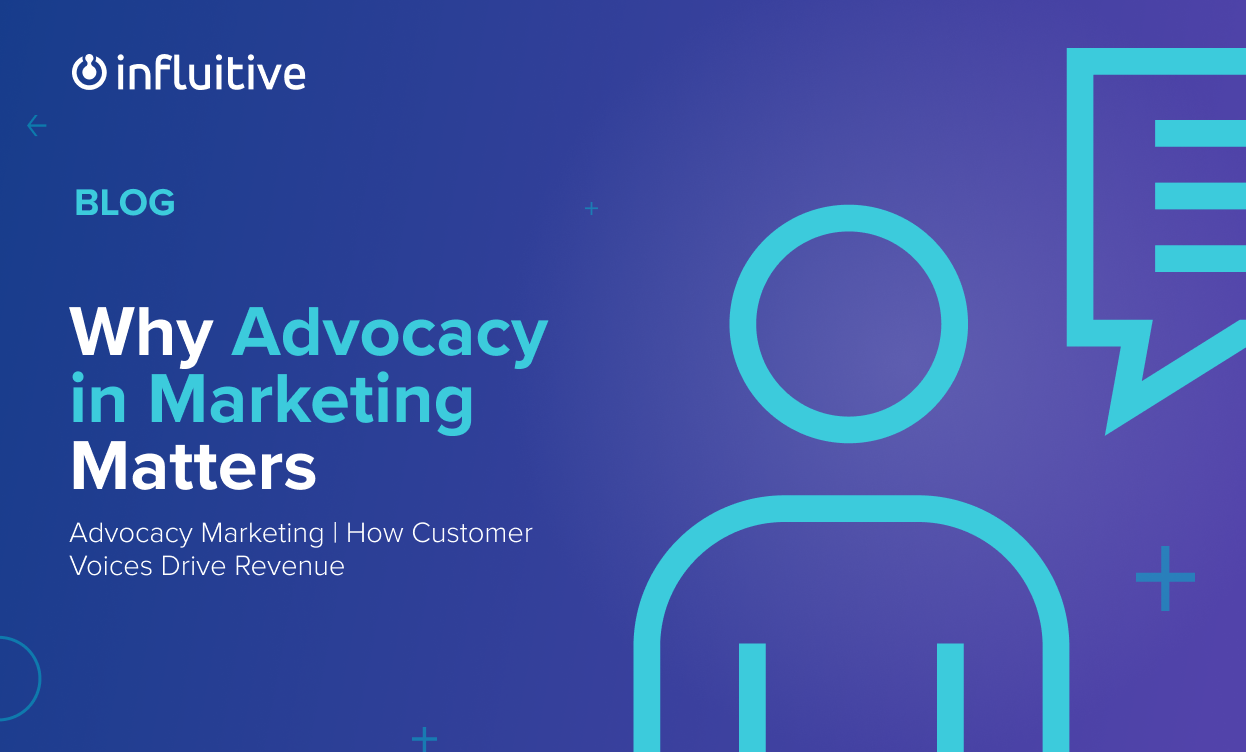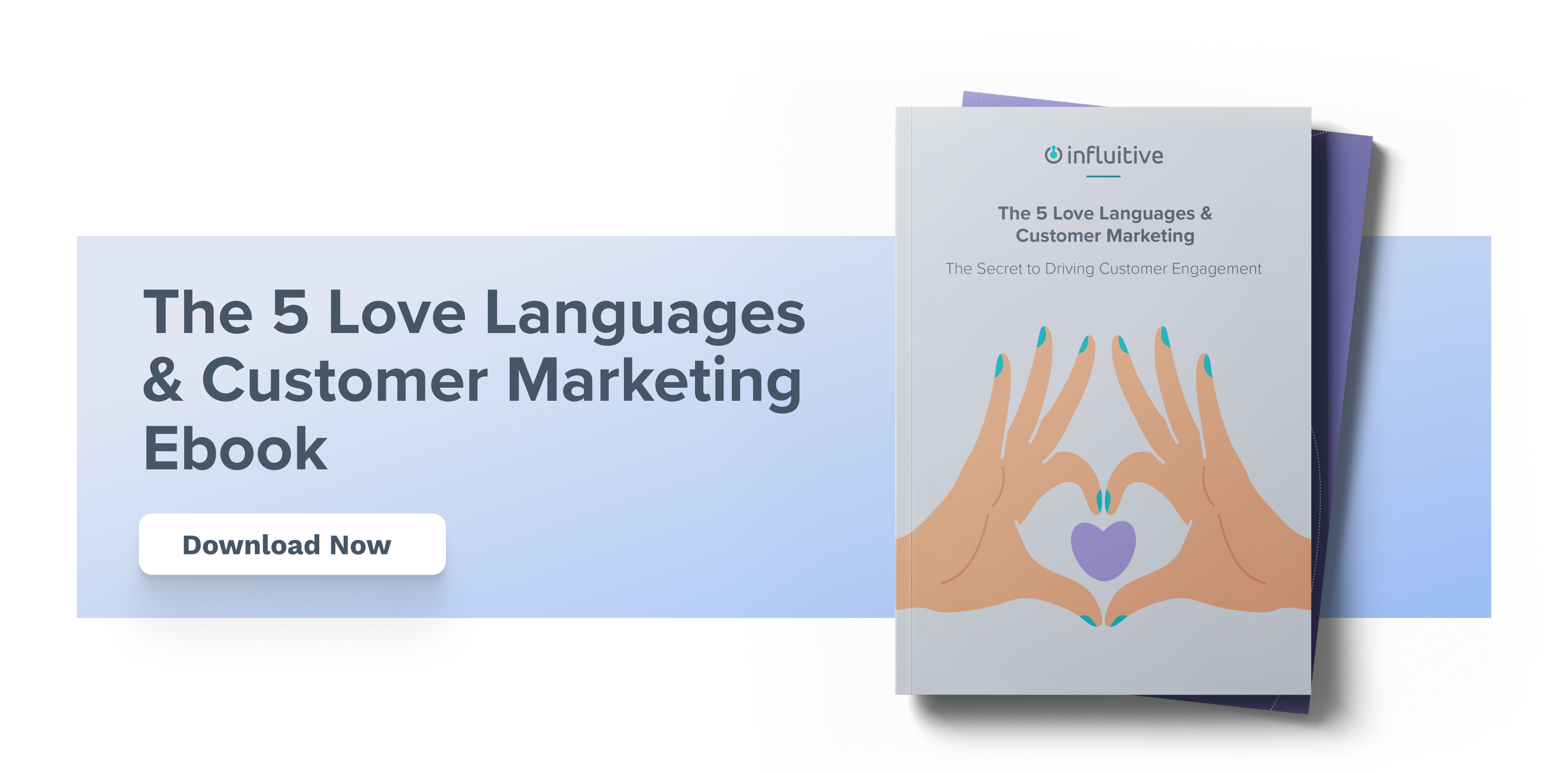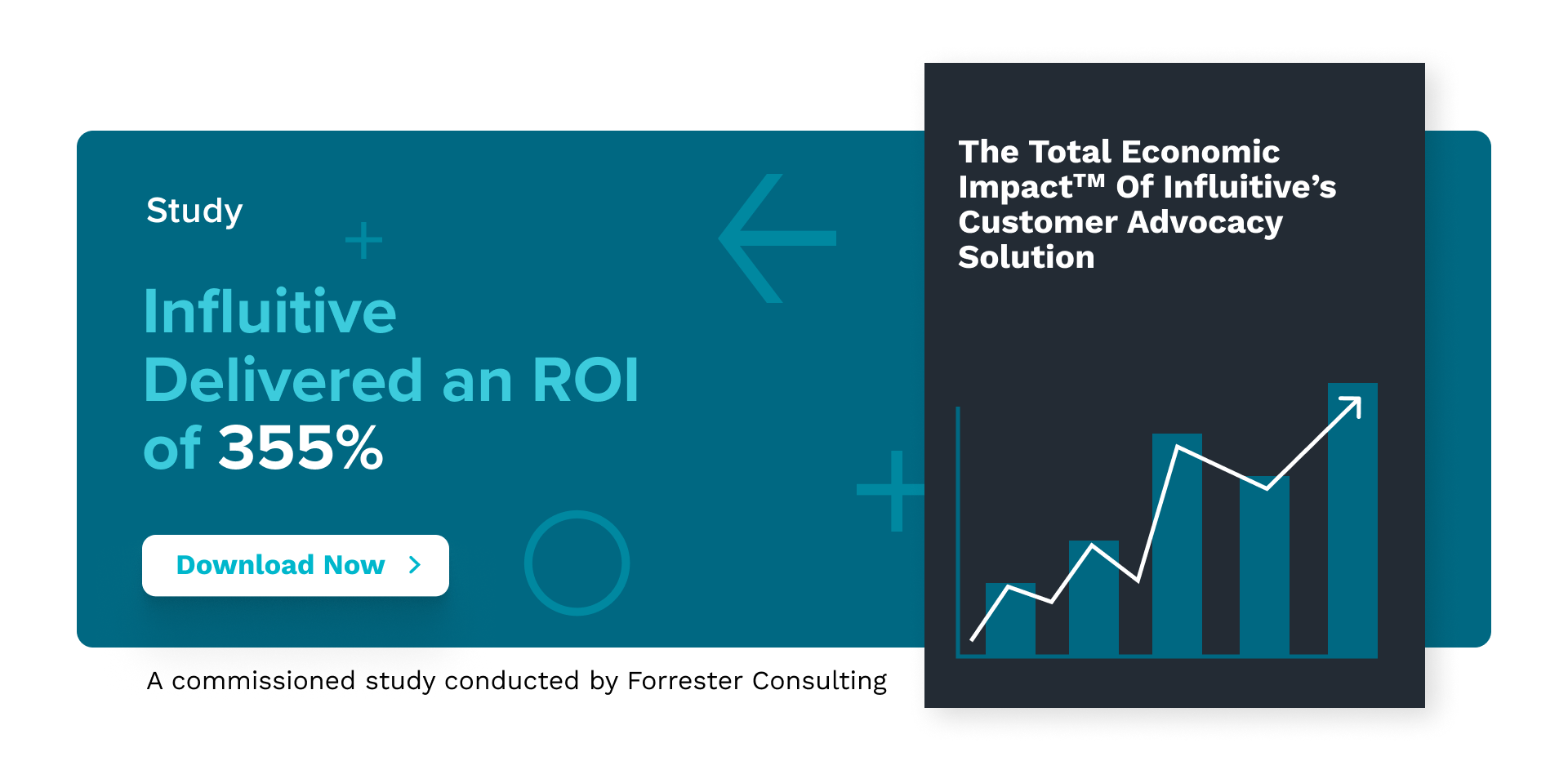To answer why advocacy in marketing matters, we need to step back a bit.
There comes a time in every marketer’s work where they hit a ceiling. It isn’t an existential crisis or anything, but it does keep us up at night.
So, what’s this ceiling?
It’s, for example, when you’re not generating as many high-quality leads as you used to, though you’re leaning on every demand generation best practice.
Or, perhaps, you’re asked to scale up your brand reach, web traffic, and other touch points, but without the budget growth to fuel the ask.
It might even be operational in the sense that you want to explore different avenues for content marketing, for example, but don’t have the internal bandwidth to do it.
This list can keep going because the “ceiling” takes different forms based on the unique factors you and your company are dealing with. But, in the end, it’s there (or it’s coming).
Okay, but how does all this connect with advocacy marketing?
Advocate Marketing Breaks the Ceiling
Advocacy marketing (or brand advocacy) is the strategy you need for breaking that ceiling.
This “ceiling” broadly stems from one challenge: audiences have gotten really good at tuning out information, especially from brands.
The data speaks to this. 88% of audiences told Nielsen that they trust recommendations from people they know more than any other channel.
Your marketing content isn’t driving as much traffic because people don’t care what brands are saying. You’re not generating more leads through your ads because audiences ignore ads. You can’t reach out to more people because they’re congregating in their own communities that your official accounts can’t reach.
However, advocacy marketing flips the entire script by amplifying your message through the people your target audiences want to hear from.
These people are thought leaders and industry trailblazers. They merit admiration and inspire audiences to try emulating their ideas and actions in their own work. When these folks start a conversation, people listen and act on what they hear.
Now, you might think these powerful figures are hard-to-reach influencers. But they’re actually a lot closer to home than you think. In fact, they’re your customers and employees! The goal of an advocate marketing program is to call upon these voices.
With the right advocacy marketing strategy, you’ll enter all the right conversations, set the right narratives, and knock out your KPIs.
What is Advocacy Marketing?
Advocacy marketing is the strategy of mobilizing your customers and employees to talk about your brand and your product or service. It’s a powerful strategy for reaching your audiences on social media. You can also leverage advocacy marketing for specific outcomes, like generating more sales revenue through social selling, content creation at scale, and much more.
However, you can’t walk in asking your customers and employees to advocate for you out of the blue. In itself, advocacy in marketing is a huge field that can involve different goals, varying strategies, and lots of planning and revision.
Learn How to Build Advocacy Marketing Programs:
Basically, there’s a road that leads up to getting your loyal customers to share testimonials and getting employees to become active on social media.
But taking that road is 100% worth it. Here’s why:
6 Benefits of Advocacy Marketing

Reach a Wider Audience on Social Media
Be it from customer advocacy or employee advocacy, a brand advocate gets your message to more people. Social posts shared by employees can get 5X+ more reach compared to official social media accounts. Employee-shared posts get 8X more engagement than the same posts posted on official brand accounts.
Your brand/marketing advocates have far bigger networks than your official accounts. But in addition, they’re personalities that their audiences can relate to and aspire to be like. That’s a key aspect of advocacy marketing because it sets up a reason for audiences to listen.
As a result, posts shared by your customers and employees get further and engage people at a deeper level. This translates into more brand reach, more clicks, more conversions, etc.
Generate Content at Scale
It’s not just about driving brand reach. With an advocate marketing program, you could produce authentic content at scale through user-generated content (UGC).
For example, your customers and employees can write LinkedIn posts with their original insights and thought leadership. They can also produce testimonial videos, participate in webinars, offer quotes or interviews, and much more.
The beauty of this content is that it’s authentic and doesn’t involve your marketing polish (which turns audiences away). Audiences resonate with UGC for its relatability and the fact that it’s from people they know and trust.
Likewise, employees and customers can also help you create your marketing content. You can lean on their authentic voices to help deliver your message in more impactful ways.
Engage Your Target Audiences in Valuable and Memorable Ways
We’ve all seen company blog posts, webinars, and ebooks. Basically, at some point, a lot of this stuff starts looking the same and is difficult to remember. Eventually, we’re not appreciating what we see because it’s the new normal. It’s all useful, but uninspiring.
Using advocacy marketing, you’ll lead conversations. One good example is social selling. This is where your employees, especially your sales team, use their thought leadership to help their audiences. In time, audiences see your team as expert problem solvers, not salespeople.
When those potential customers reach out to your sales team, they’ll do it looking for help, not as a skeptical or reluctant buyer.
Drive Key Product and Service Improvements
Advocacy in marketing is a two-way street. Up to this point, we spoke about how customers can promote your offerings. But on the other side, your customers can also guide you into improving your offerings in ways that will resonate with your target market.
To see how, check out the blog on customer marketing and product marketing by Alex Ruddock, Sr. Manager of Product Marketing and Product Management at Influitive.
Optimize Marketing Spend
The benefit of driving reach on social through your employee and customer advocates is that it unlocks an organic traffic and engagement source. You get extra exposure on social but without having to pay for more ads. Check out how Dynatrace used employee advocacy to drive a reach of 1.1 million people across its social media channels.
Nurture Customer Loyalty, Retention and Growth
To be clear, advocacy marketing doesn’t lead to customer loyalty. Rather, it’s a reflection of loyal customers who want to go out and bat for you. So, the key point to focus on is the work that you had to put in to nurture loyal customers.
It starts with the steps you take to attract customer advocates (which we’ll explore below). Then, when your customers do carry out an act of advocacy, you want to show them gratitude. Overall, your goal is to keep that cycle running, and at scale.
Retaining customers can drive revenue growth. In fact, a 5% increase in customer retention can result in a profit increase of 25-95%. Moreover, acquiring a new customer costs almost 5X more compared to retaining an existing customer.
How to Build a Customer Advocacy Marketing Program
This is a big topic, and we recommend checking out this guide from Jeni Asaba (Sr. Manager, Community Engagement and Advocacy at Jamf). But for a quick overview, we’ll summarize a few key points you need to keep in mind:
How to Attract Customer Advocates

You’re likely doing several of these activities already, so the tips here aren’t in any particular order of importance. But leveraging all of them in your advocacy marketing efforts will drive big gains across your critical KPIs.
1. Design a Personalized Customer Journey
Use each of your channels (e.g., community, email, etc.) to build a personalized journey for your customers. This journey should include every key touchpoint – i.e., from discovery to signing to onboarding to going live to implementation to renewal and so on.
The key is ensuring you’re engaging with your customers at each point in their journey. Use email drip campaigns, drive activity in your customer advocacy program or pltaform (if you have one), and think of campaigns or initiatives to pique customer interest.
Your CSMs or AMs are on the frontlines working with your customers. But it’d be unfair to put all of this on their shoulders alone. Getting a customer marketer involved to be like a ‘glue person’ to drive this journey and represent the customer’s voice in your key internal teams is a must.
2. Deliver on Your Customer’s Goals as Accounts and Individuals
Providing a great offering is table stakes. Even providing a stellar customer experience is, to be frank, expected. But to turn customers into brand advocates, you need to go further. You need to become a customer-obsessed company.
So, what does that mean?
Well, it’s about helping your customers achieve their goals both as accounts and as individuals.
You want to ensure they hit their KPIs and other objectives while using your offering(s). If the account achieves strong ROI from your products and services, that’s a massive positive from a renewal standpoint.
But at the same time, you also want to help the individual behind the account grow both in their career and personal lives. Empowering them to grow their networks, build their personal brands, or get their next promotion are all amazing positive steps.
We have to note that getting this part right will drive powerful customer advocacy activity. Your customers know you appreciate them, and they’ll reciprocate. But once they start engaging in advocacy, you should return the favor to them and keep the cycle going (and growing).
3. Integrate the Customer’s Voice into Key Internal Teams
We touched on this earlier in our point on personalized journeys. But make sure that your key internal teams – like Product, Customer Success, etc. – are hearing the customer.
Yes, at one level the customer appreciates that they’re listened to. But incorporating the voice of the customer also helps you respond to what they and prospects actually want.
4. Personalize Your Gratitude
It’s important to appreciate your customers for their acts of advocacy. But it’s also important to ensure that appreciation resonates with the people you’re working with.
That’s why you want to spend time understanding your advocates and engaging them in ways they’ll care for and remember. Lauren Turner’s guide on using the 5 Love Languages to tailor your appreciation is a great example of how to personalize your gratitude.
5. Align Your Customer-Facing Teams
You’ll want to ensure your customer-facing teams are on the same page. You can’t build a solid marketing advocacy program without Customer Success, Product and other teams since you’ll need their help to implement your customer journey properly.
6. Build a Customer Community
Some of the most powerful sources of advocacy are customer communities. This is where your customers can get together to exchange best practices and provide help to one another. It also gives you another window into what your customers want from your offerings.
7. Design for Growth and Scale
A big challenge with an advocacy marketing program is growing it in a way that doesn’t fatigue your best advocates and – on the other hand – under-engage your less-known customers.
This is where investing in a dedicated customer advocacy platform will help greatly. You can leverage automation, leaderboards and points systems, full-featured community hubs, and so much more to simplify engaging your entire customer base.














































